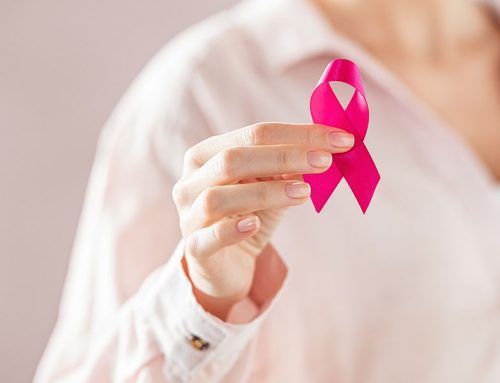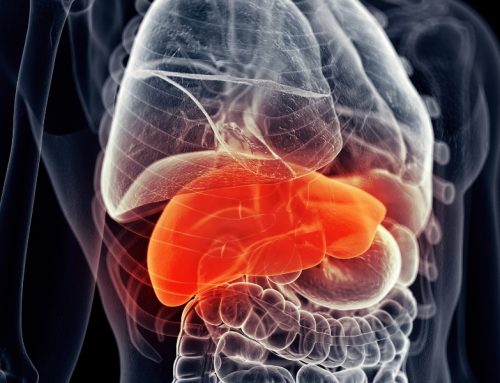
Sven Moesgaard, Pharma Nord technical director (left), introduced Dr. Knud Lockwood (right) to Dr. Karl Folkers (center). Dr. Folkers had evidence of low Coenzyme Q10 status in cancer patients. Dr. Lockwood was treating breast cancer patients. The meeting led to the start of the ANICA breast cancer study.
The ANICA study – the Adjuvant Nutritional Intervention in Cancer study – was an open clinical study conducted in Denmark in the 1990s. It was an interesting study with thought-provoking results. Its design reflected outside-the-box thinking.
The ANICA study enrolled 32 typical breast cancer patients who were classified high risk because their tumors had spread to the lymph nodes. The 32 women received the standard breast cancer treatment at the time. In addition, they were treated with an adjuvant therapy in the form of a combination of various micronutrients.
Dosages used in the Coenzyme Q10 and breast cancer study
The micronutrient combination that Dr. Knud Lockwood used in the ANICA study consisted of the following daily dosages:
- Coenzyme Q10 90 milligrams
- Selenium 387 micrograms
- Vitamin C 2,850 milligrams
- Vitamin E 2,500 international units
- beta-carotene 32.5 international units
- gamma-linolenic acid 1.2 grams
- omega-3 polyunsaturated fatty acids 3.5 grams
Later, as the study progressed, the protocol was changed to lower the daily dosage of selenium (initially high at 387 micrograms) and to raise the daily dosage of Coenzyme Q10 (initially low at 90 milligrams). The daily Coenzyme Q10 dosage was raised to 390 milligrams [Bjørklund].
Inspiration for the Coenzyme Q10 and breast cancer study
Dr. Karl Folkers was the American chemist who first determined the structure of the Coenzyme Q10 molecule in 1958. Early on, he recognized the role of Coenzyme Q10 in cellular energy processes and in antioxidant protection of the cells. In the 1980s and 1990s, he was leading clinical investigations into the effect of Coenzyme Q10 on the health of heart disease patients.
In his analyses of blood samples, Dr. Folkers had found that cancer patients, also including breast cancer patients, generally have lower plasma Coenzyme Q10 concentrations than healthy people of the same age and background. He wanted to see whether Coenzyme Q10 supplementation could correct the low plasma Coenzyme Q10 status and thus help to prevent or reverse cancer.
Dr. Knud Lockwood, a Danish oncologist in private practice in Copenhagen, agreed to start an investigation of the effects of Coenzyme Q10 on cancer patients together with Dr. Folkers. In addition, Dr. Lockwood wanted to use a ”cocktail” of various micronutrient supplements, as listed above.
Dr. Lockwood’s thought was to give the breast cancer patients the benefit of the synergistic effect of the nutritional supplements. In that respect, it is interesting to note two micronutrient interactions that have come to light more recently:
- Dr. Urban Alehagen, Linköping University, Sweden, and Dr. Jan Aaseth, Kongsvinger Hospital, Norway, have written about the biological interrelationship of Coenzyme Q10 and selenium in human health. They point out that low concentrations of selenium reduce the cells’ ability to maintain sufficient concentrations of Coenzyme Q10 and that adequate concentrations of Coenzyme Q10 are needed for the cells to benefit from the biological functions of selenoproteins [Alehagen].
- Geir Bjørklund, Council for Nutritional and Environmental Medicine, Norway, has suggested that the Coenzyme Q10 and omega-3 fatty acid supplements had the primary anti-cancer effect in the ANICA study. Coenzyme Q10 and the fish oil improve the regulation of prostaglandin production in the tumor cells [Bjørklund].
Note: Prostaglandins are hormone-like chemicals in the body that play a key role in inflammation. Inflammation is a force in the development of cancer tumors. Reducing prostaglandin production should reduce the extent of inflammation.
Results of the Coenzyme Q10 and breast cancer study
In the 1990s when the ANICA study was started, the prognosis for high-risk breast cancer patients was a 50% survival rate after five years [Bjørklund].
By the five-year mark, only six of the original 32 ANICA breast cancer patients had died, far fewer than the anticipated 16 patients (50% of 32). Furthermore, two of the six deaths were not the direct result of cancer. One death was caused by suicide, and another was caused by a fatal reaction to the administration of the cancer chemotherapy drug doxorubicin [Bjørklund].
At the five-year point of the ANICA adjuvant treatment with Coenzyme Q10 and other micronutrients, Dr. Lockwood could see that, for the most part, the breast cancer and lymph node tumors were still present. The tumors had not disappeared entirely, but they had either shrunk or at least stopped growing. The ANICA patients were living with the cancer under control. There were no new metastases [Bjørklund].
Understanding Coenzyme Q10 and selenium and breast cancer
Geir Bjørklund thought the suppression of the synthesis of inflammation-promoting prostaglandins to be the primary mechanism underlying the success of the ANICA study’s adjuvant protocol. Unusual inflammation is a biological marker for the progression of breast cancer.
Beyond the reduction of the bio-synthesis of prostaglandins, Bjørklund thought that the supplementation with Coenzyme Q10 and selenium helped to reduce the oxidative stress inside the tumors. Breast cancer cells are usually subjected to higher levels of oxidative stress, which can further stimulate the malignant development.
Note: Oxidative stress is defined as an imbalance between harmful free radicals and neutralizing antioxidants. Harmful free radicals – not all free radicals are harmful – cause structural and functional damage to cells, DNA, and proteins.
Coenzyme Q10 and selenium in combination
The results of the ANICA study were very promising. In an ideal world, the therapeutic effect of the combination of Coenzyme Q10 and selenium with fish oil and other antioxidant supplements would have been tested in randomized controlled trials or in case-control studies with matched control groups.
In a future article, I want to write about a second open study in which 41 consecutive end-stage cancer patients were given a similar Coenzyme Q10 and selenium combination together with other antioxidant micronutrients [Hertz & Lister].
As it is, the combination of a well-formulated Coenzyme Q10 supplement with an organic high-selenium yeast preparation is affordable, safe, and worth the gamble that it inhibits the development of tumors. It is plausible that the interaction between Coenzyme Q10 and selenium retards the development of breast cancer tumors [Bjørklund].
Sources
Alehagen, U. & Aaseth, J. (2015). Selenium and coenzyme Q10 interrelationship in cardiovascular diseases–A clinician’s point of view. Journal of Trace Elements in Medicine and Biology, 31157-162.
Bjørklund, G. (2015). The Adjuvant Nutritional Intervention in Cancer (ANICA) Trial. Nutrition and Cancer, 67(8), 1355-1358.
Folkers, K. (1996). Relevance of the biosynthesis of Coenzyme Q10 and of the four bases of DNA as a rationale for the molecular causes of cancer and a therapy. Biochem Biophys Res Commun, 224, 358–361.
Folkers, K., Osterborg, A., Nylander, M., Morita, M., & Mellstedt, H. (1997). Activities of vitamin Q10 in animal models and a serious deficiency in patients with cancer. Biochem Biophys Res Commun, 234, 296–299.
Folkers, K., Brown, R., Judy, W.V., and Morita, M. (1993). Survival of cancer patients on therapy with Coenzyme Q10. Biochem Biophys Res Commun, 192, 241–245.
Hertz, N., and Lister, R. E. (2009). Improved survival in patients with end-stage cancer treated with coenzyme Q(10) and other antioxidants: a pilot study. The Journal of International Medical Research, 37, no. 6: 1961-1971.
Lockwood, K., Moesgaard, S., Hanioka, T., & Folkers, K. (1994). Apparent partial remission of breast cancer in “high risk” patients supplemented with nutritional antioxidants, essential fatty acids and coenzyme Q10. Molecular Aspects of Medicine, 15 Suppls231-s240.
Disclaimer: The information presented in this article is not intended as medical advice and should not be regarded as such.









[…] results of the ANICA study – the Adjuvant Nutritional Intervention in Cancer study – showed that adjuvant treatment of […]
[…] Q10 delays the growth of breast cancer tumors The Danish ANICA study and the Danish End-Stage Cancer study have shown that daily supplementation with Coenzyme Q10 in […]